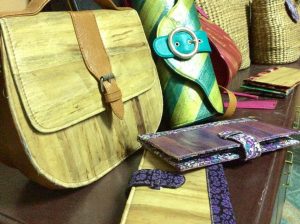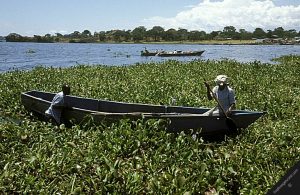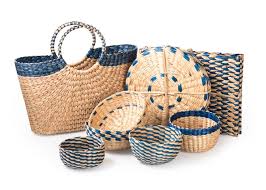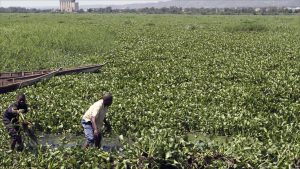When talking about the water hyacinth on Lake Victoria, most people pay much attention to its negative effects on the aquatic and human life. However, it must be noted the the water hyacinth despite its negative consequences, there are a number of people who derive their livelihood from the plant.
As for Kevin Kawuki, a resident at Ggaba landing site, the green weed has no any noted positive importance for the case of Uganda even when he believes that they are of great importance in European countries.
“For the years I have lived on this landing site, I have never seen or noticed anything useful out of this weed. It just only makes the lake water dirty. I have seen it affecting transport and even prevents people from fetching water as they cover the entire end sides of the lake,” said Kawuki.
However, in many developed countries, many communities have now resorted to looking at how to exploit the advantages of the plant rather than looking at it as a dangerous plant.
Benefits of the water hyacinth to the community

products are made from water hyacinth (or locally known as water lily)? The water lily stalks are dried, dyed and processed
Even though it is still hard in Uganda, the water hyacinth can actually be used for a number of purposes which among others includes; making paper, ropes, charcoal briquetting and water purification.
According to online information, Bangladesh, Philippines, Indonesia and India are using water hyacinth stems to make paper. Although it cannot stand alone, the water hyacinth fiber is blended with waste paper or jute to make paper.
The fiber can also be used to make rope. The stalk from the plant is shredded length ways to expose the fibers and then left to dry for several days. The finished rope is treated with chemicals to prevent it from rotting. The stalks can also be properly dried and used to make baskets and matting for domestic use.
Water hyacinth can also be used to aid the process of water purification either for drinking or for liquid effluent from sewage systems. In agriculture, the root structures of water hyacinth provide a suitable environment for aerobic bacteria to function. Aerobic bacteria feed on nutrients and produce inorganic compounds which produce food for the plants.
The water hyacinth is believed to have come to Africa from South America as an ornamental pond plant due to its beauty. Its broad, thick, glossy, ovate leaves, allows it to rise above the water surface up to a meter high. Being strong and impenetrable, these leaves heavily damage boat engines thereby affecting water transport.
As commonly known, the water lily is considered the most productive plant on earth as it yields more than 200 tons of dry matter per hectare annually under normal conditions. On water containing high concentrations of sewage, it yields up to 657 tons of dry matter per hectare
In East Africa, the water weed is a regional problem affecting all the East African Countries that share Lake Victoria. It has affected fisheries, water supply, human health, transport, hydro power and agriculture on the shores of Victoria making it hard for some people to carry out some human activities.
As fodder for the animals, water hyacinth can be mixed with a variety of vegetable wastes to facilitate weight gain especially in pigs.
However, it has been discovered that feeds containing 30 percent more hyacinths can reduce weight gain by over 90 percent. Therefore water hyacinth should be treated with maximum care when used in animal fodder.
Fish feeds from water hyacinth stimulate fast fish growth for instance; the Chinese grass carp is a fast growing fish which eats aquatic plants. It grows at a tremendous rate and reaches sizes of up to 32 kilograms.
Therefore sincerity is human activities that brought about the spread of water hyacinth, why don’t we employ the same activities to get rid of the plant.



